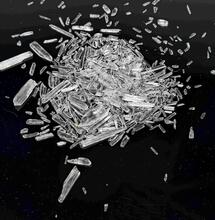DIY Composting

It isn't neat, fast or necessarily pretty, but it has worked in nature for an incredibly long time.
It isn't neat, fast or necessarily pretty, but it has worked in nature for an incredibly long time.
In an untended forest or jungle, leaves and other plant materials fall to the ground and decompose. This creates a rich and fertile layer of cold compost and humus for future growth - no human intervention required. It isn't neat, fast or necessarily pretty, but it has worked in nature for an incredibly long time. If you took a bag of leaves, lawn clippings, ripped newspapers, etc. and spread it out on the ground, eventually it will decompose much like it would on a forest floor. It would also be messy, and the neighbors would likely complain if you made a habit of it. A simple answer to this is to put the material in a pile instead. This not only keeps things neater around the garden, but helps with the composting process. This mound of decomposing vegetation can be referred to as a 'cold' compost pile, and depending on what's included, in anywhere from a few months to a couple of years it will become compost. Nature will do all the work if given enough time and some occasional rain. One very simple form of composting involves taking the leftover leaves, stems and roots after a fall harvest, putting them in a pile, and then digging out the compost that develops over the winter for use in the spring. Depending on the local conditions this method may have to be modified to utilize a few different piles. Each pile can then be allowed to sit for a year or longer. Ideally, compost piles should be about a yard (meter-ish) or slightly larger to a side. Piles that are too small don't heat up as well. Piles too large are both hard to stir, and require more stirring, as the material at the core needs to be rotated with the material on the outside. There are ways to make the process faster and to avoid unpleasant aromas. While decomposing material in the forest can stink and few people will complain; stink up the back yard, and it can dull the fun of being out in it. If too much green material is added, the pile can start to smell. If too much brown material is added, decomposition slows and the process takes longer. “Leaves, newspaper, cardboard, sawdust, straw - anything tree or sugar related is usually a 'brown'.„
'Brown' materials generally have a carbon to nitrogen ratio of greater than thirty to one. That is to say, they have a lot of carbon for their amount of nitrogen. Leaves, newspaper, cardboard, sawdust, straw - anything tree or sugar related is usually a brown. These will all take a long time to decompose if left in a pile without green materials. If too much brown material is added, composting will slow, but browns help with structure and odor control. If the compost pile starts to smell, add more browns and stir the pile.
“Grass clippings, vegetable or fruit food scraps, and green leafy material are all 'greens'.„
'Green' materials generally have a carbon to nitrogen ratio of less than thirty to one. In other words, they contribute more nitrogen for the amount of carbon that they contain than browns do. Grass clippings, vegetable or fruit food scraps, and green leafy material are all greens. These will decompose quickly if left in a pile without brown materials, but they also tend to stink and rot in the process. Putting a layer of browns over a new layer of greens will help keep the pile from smelling unpleasant. The compost pile should have a light earthy aroma; foul odors are an indication that something isn't right. Add browns and stir to help correct the imbalance.
To speed up the composting of browns (and keep the greens from stinking) use approximately equal amounts of each, and mix well. Smaller pieces compost faster than large pieces do, in part because of the increase in surface area for the bacteria and other tiny friends to work on. This is why, even though a log and sawdust are made from the same material, sawdust can be composted in weeks or months; a decomposing log can take years or decades.
A pile of 50/50 brown to green material will compost faster and more pleasantly than a mix of too much of one or the other. The biological agents involved need air and moisture as well as this mix. To give the bacteria air, stir the compost pile occasionally. The pile should be kept damp - but not wet. Both lightly watering and stirring can speed the process.
If the pile doesn't start to heat up in the next couple of days, it is an indication that something is off. It could be that there isn't enough material in the pile, the composition of the pile is off, it isn't moist enough, it's too moist, or it needs stirring. A compost pile that doesn't heat up is called a 'cold' compost pile. It will still make compost, but will take longer than a 'hot' one will. When in doubt, stir the pile - stirring corrects a multitude of problems and is an easy fix.
If the mix, moisture and air are correct (or at least close), a new pile will start to heat up and become a 'hot' compost pile. A pile with an internal temperature of between 120º F (49º C) and 140º F (60º C) is ideal, but temperatures can reach as high as 160º F (71º C). As composting continues, the temperature will drop as more of the material converts into compost. Hot composting has benefits over cold composting: it's faster, and seeds and some pathogens are killed from the heat generated.
Once the compost is ready it should be a dark, earthy-smelling material. To remove any debris (or walnuts; my compost pile is a favorite burying spot for the local squirrel population) the compost can be run through a piece of grating. The finished product should be very similar to commercially bagged compost.
Making compost is not difficult - nature does it all the time. By helping the process along using a properly aerated and moist mix of the correct proportions, composting can be done in back yards, saving money on purchasing and transporting bags of store-bought product.
Peace, love and puka shells,
Grubbycup
“Leaves, newspaper, cardboard, sawdust, straw - anything tree or sugar related is usually a 'brown'.„
'Brown' materials generally have a carbon to nitrogen ratio of greater than thirty to one. That is to say, they have a lot of carbon for their amount of nitrogen. Leaves, newspaper, cardboard, sawdust, straw - anything tree or sugar related is usually a brown. These will all take a long time to decompose if left in a pile without green materials. If too much brown material is added, composting will slow, but browns help with structure and odor control. If the compost pile starts to smell, add more browns and stir the pile.
“Grass clippings, vegetable or fruit food scraps, and green leafy material are all 'greens'.„
'Green' materials generally have a carbon to nitrogen ratio of less than thirty to one. In other words, they contribute more nitrogen for the amount of carbon that they contain than browns do. Grass clippings, vegetable or fruit food scraps, and green leafy material are all greens. These will decompose quickly if left in a pile without brown materials, but they also tend to stink and rot in the process. Putting a layer of browns over a new layer of greens will help keep the pile from smelling unpleasant. The compost pile should have a light earthy aroma; foul odors are an indication that something isn't right. Add browns and stir to help correct the imbalance.
To speed up the composting of browns (and keep the greens from stinking) use approximately equal amounts of each, and mix well. Smaller pieces compost faster than large pieces do, in part because of the increase in surface area for the bacteria and other tiny friends to work on. This is why, even though a log and sawdust are made from the same material, sawdust can be composted in weeks or months; a decomposing log can take years or decades.
A pile of 50/50 brown to green material will compost faster and more pleasantly than a mix of too much of one or the other. The biological agents involved need air and moisture as well as this mix. To give the bacteria air, stir the compost pile occasionally. The pile should be kept damp - but not wet. Both lightly watering and stirring can speed the process.
If the pile doesn't start to heat up in the next couple of days, it is an indication that something is off. It could be that there isn't enough material in the pile, the composition of the pile is off, it isn't moist enough, it's too moist, or it needs stirring. A compost pile that doesn't heat up is called a 'cold' compost pile. It will still make compost, but will take longer than a 'hot' one will. When in doubt, stir the pile - stirring corrects a multitude of problems and is an easy fix.
If the mix, moisture and air are correct (or at least close), a new pile will start to heat up and become a 'hot' compost pile. A pile with an internal temperature of between 120º F (49º C) and 140º F (60º C) is ideal, but temperatures can reach as high as 160º F (71º C). As composting continues, the temperature will drop as more of the material converts into compost. Hot composting has benefits over cold composting: it's faster, and seeds and some pathogens are killed from the heat generated.
Once the compost is ready it should be a dark, earthy-smelling material. To remove any debris (or walnuts; my compost pile is a favorite burying spot for the local squirrel population) the compost can be run through a piece of grating. The finished product should be very similar to commercially bagged compost.
Making compost is not difficult - nature does it all the time. By helping the process along using a properly aerated and moist mix of the correct proportions, composting can be done in back yards, saving money on purchasing and transporting bags of store-bought product.
Peace, love and puka shells,
Grubbycup
S
Soft Secrets



